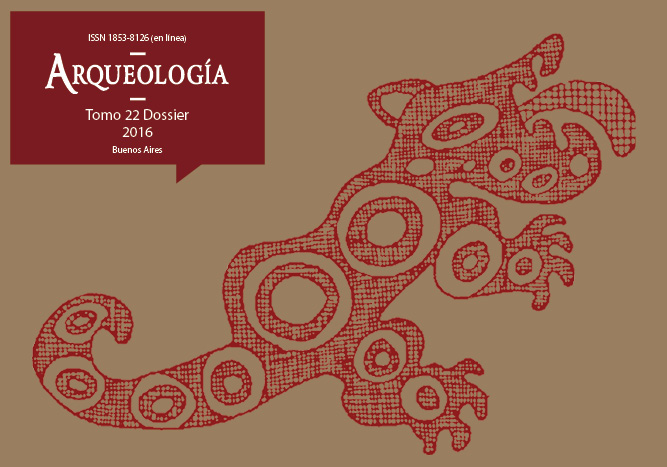Variabilidad en conjuntos zooarqueológicos tempranos del Macizo del Deseado (Santa Cruz, Argentina)
Palabras clave:
Zooarqueología, Pleistoceno final-Holoceno temprano, Cazadores-recolectores, Meseta, Patagonia
Resumen
La cuenca de los Zanjones Rojo y Blanco se ubica en el sector noreste del Macizo del Deseado (Santa Cruz, Argentina). En este trabajo nos proponemos comparar y discutir la variabilidad zooarqueológica de los conjuntos que resultan de las primeras ocupaciones cazadoras recolectoras de la cuenca, llevadas a cabo entre la transición Pleistoceno- Holoceno y el Holoceno temprano -entre ca. 12.000 y ca. 7500 años AP. Los materiales óseos que se analizan provienen de dos contextos estratigráficos, uno ubicado en el sector inferior de la cuenca y que corresponde a los conjuntos del sitio AEP-1 de Piedra Museo, y el otro localizado en el sector de cabeceras y que corresponde a los conjuntos del sitio Cueva Maripe. La comparación de los conjuntos se realizó en base a unas 30 variables taxonómicas, anatómicas y tafonómicas representadas de forma estandarizada entre todos los conjuntos. Los resultados obtenidos reflejan la existencia de historias diferentes entre ambos sectores de la cuenca y un uso diferencial de los recursos animales por parte de las sociedades que la habitaron en el pasado.Descargas
La descarga de datos todavía no está disponible.
Cómo citar
Marchionni, L. (1). Variabilidad en conjuntos zooarqueológicos tempranos del Macizo del Deseado (Santa Cruz, Argentina). Arqueología, 22(3), 163-189. https://doi.org/10.34096/arqueologia.t22.n0.3282
Sección
Artículos
Los autores/as que publiquen en esta revista aceptan las siguientes condiciones:
- Los autores/as conservan los derechos de autor y ceden a la revista el derecho de la primera publicación, con el trabajo registrado mediante Licencia Creative Commons 4.0 Internacional (CC-BY-NC-SA), que permite a terceros utilizar lo publicado siempre que mencionen la autoría del trabajo y a la primera publicación en esta revista.
- Los autores/as pueden realizar otros acuerdos contractuales independientes y adicionales para la distribución no exclusiva de la versión del artículo publicado en esta revista (p.e. incluirlo en un repositorio institucional o publicarlo en un libro) siempre que indiquen claramente que el trabajo se publicó por primera vez en esta revista.
- Se permite y recomienda a los autores/as a publicar su trabajo en Internet (p.e. en sus sitios web personales o en depósitos institucionales), tanto antes como después de su publicación en esta revista, siempre y cuando proporcionen información bibliográfica que acredite, si procede, su publicación en ella. De esta manera, pueden favorecerse intercambios productivos y a una mayor y más rápida difusión del trabajo publicado (vea The Effect of Open Access).



.png)

(1)13.png)






1.jpg)
1.png)
1.jpg)


13.png)
1.png)


(1)1.png)









